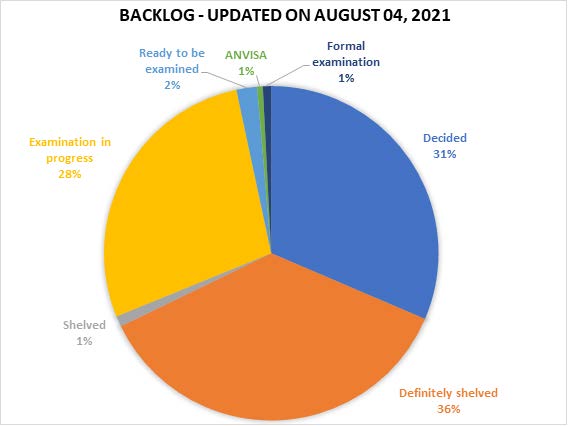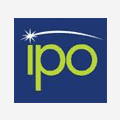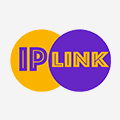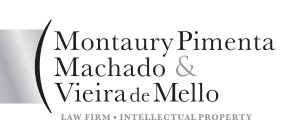Over the last 5 years, the Brazilian Patent Office has been adopting measures to reduce the backlog in patent examination combined with several improvements in its examination guidelines to perform a high-quality technical examination.
In addition, the pandemic scenario has brought other sensitive discussions regarding the Brazilian patent system and its impact on public health issues. This article aims at providing an overview of 7 topics that directly affects Life Sciences patents in Brazil.
Updated version of the Guidelines for Examination of Patent Applications in the Biotechnology Field.
The first version of the Guidelines for Examination of Patent Applications in the Biotechnology Field issued by the Brazilian PTO was published in 2002 after the Brazilian IP Law was amended to accept the filing of patent applications claiming chemistry- and biotech-related subject matter. This first document looked more like a draft, and it was very limited in terms of scope.
It was only in 2015 that the Brazilian PTO finally published detailed Guidelines to orientate both the Examiners and Applicants as to the rules that should be applied in this specific technological field. The big issue is that every year the biotech industry achieves huge development, so these Guidelines became outdated quite fast.
Therefore, an updated version of the Guidelines was issued in 2020 in an attempt to correct this technological gap of 5 years. Many improvements were made in this regard, such as the inclusion of several examples of ways to draft antibody claims in accordance with the local practice. It is important to mention that the definition of antibodies in terms of percentage of identity/similarity is still not allowed in Brazil because according to the Guidelines, the characterization of a sequence of interest based on the identity percentage is very broad and generally includes in its scope sequences not supported by the specification or that do not fulfill the patentability requirements. In addition, the Guidelines states that in general, the specification does not provide enough information that would allow the reproduction of all the sequences covered by a definition made in terms of percentage of identity/similarity. On the other hand, a relevant progress was made with the acceptance of Markush formulas to define biological sequences, either for nucleotide or amino acid sequences.
The Brazilian PTO itself recognizes that it should not take so much time to update the Biotech Guidelines under the penalty of becoming obsolete and not covering important topics in the biotechnology filed. For example, these Guidelines do not cover specific rules to examine patent applications related to CRISPR technology. Therefore, patent specialists in Brazil defend that these Guidelines be updated at least every year in order to keep up with the developments in the biotech field.
New Guidelines for examination of patent applications in the chemistry field:
Different from the Guidelines in the biotechnology field addressed in above item I, the first (and only) version of the Guidelines for Examination of Patent Applications in the Chemistry Field was published in 2018. The main reason for this apparent delay is that some topics related to the chemistry field were addressed in the BPTO’s general guidelines for examining patent applications belonging to any technological field.
The most relevant aspects of the Guidelines specifically drafted for chemistry-related patent applications are: (1) an entire chapter with the objective of clarifying certain aspects of substantive examination of stereoisomers and different polymorphic forms of a chemical compound; (2) the fact that the Brazilian PTO has unexpectedly changed its strict position regarding what should be accepted when claiming a composition for medical use, and (3) a full chapter detailing key issues of the requirements to obtain protection for a new medical use of a known substance.
More than 3 years have passed since these Guidelines came into effect and the outcome is positive. The Brazilian PTO not only clarified the examination of important aspects that had never been discussed before, but also became more flexible in terms of claim language by accepting new ways of drafting claims related to medical compositions.
Ampliation of the options for fast-track examination
One aspect that had special attention in the Brazilian PTO in the last couple of years was the effort to adopt fast-track examination for various groups of inventions. The BPTO currently has 17 ways to accelerate examination of patent applications with relevant improvements particularly in the ampliation of PPH agreements and new eligible categories, such as startups, and SMEs (small and medium-sized enterprises).
A summarized list of the options of fast-track examination in Brazil is provided below:
- the applicant is 60 years old or more;
- the applicant is a physically or mentally disabling disease;
- the applicant bears a severe illness;
- the applicant is a micro or small company, or an individual microentrepreneur;
- the applicant is an Institution of Science, Technology and Innovation;
6. the applicant is a Startup; - the application covers a “green” technology (environmentally friendly technology);
- the application covers a technology directed to the diagnosis, prophylaxis and/or treatment of AIDS, cancer, rare or neglected diseases;
- the object of the application is related to a pharmaceutical product, process, equipment and/or material for use in the diagnosis, prophylaxis and/or treatment of COVID-19;
- the application covers products, processes or equipment considered strategic by public policies of the Ministry of Health (in this case, only the Ministry of Health can request the fast-track examination);
- the application refers to a technology of public interest or national emergency;
- if a granted patent is a condition for the applicant to receive financial aids;
- the object of the application is being reproduced in Brazil without applicant’s consent;
- third parties being accused of infringement;
- third parties formerly using a technology that was later filed as a patent;
- the application belongs to a patent family which first application was filed in Brazil; and
- the application was granted in one or more countries that have a PPH agreement with Brazil.
Items 8 and 9 are particularly related to the life sciences field, but in principle all the above-mentioned options can be used to speed up the examination of life sciences-related patent applications provided that they fulfill one of the requirements 1 to 17. According to statistics provided by the Brazilian PTO, approximately 5,000 requirements of fast-track examination were filed in the last 5 years. The average time between the fast-track examination request and the final decision on the merits of the invention is about one year, which corresponds to a very short period if compared to the regular timeframe of approximately 8 years to grant a patent in Brazil.
Recent brazilian supreme court decision on patent term for pharmaceutical products and processes
On May 6, 2021, the Brazilian Supreme Court has decided that the sole paragraph of Section 40 of the Brazilian IP Law is unconstitutional. This legal provision allowed a minimum validity term of 10 years for patents of invention and 7 years for utility models, counted from the granting date. After this decision, all patents granted will be valid for 20 years counted from the filing date, regardless of the time spent by the Brazilian PTO to examine the applications. In addition, the decision applies retroactively to already granted patents related to pharmaceutical products and processes, as well as equipment and materials for use in healthcare. This ex tunc effect of the decision also covers patents that were subject to lawsuits challenging the 10-year rule filed by April 07, 2021, irrespective of the technological field.
Since the Supreme Court decision did not provide any information on how to determine whether a patent relates or not to the group of cases defined as “pharmaceutical products and processes, medical equipment and materials for use in healthcare”, this classification is being made by the Brazilian PTO based on the following criteria:
- Patents that were sent to Anvisa for prior consent;
- Patents having the following IPC classifications: A61B, A61C, A61D, A61F, A61G, A61H, A61J, A61L, A61M, A61N; H05G (technologies associated with medicine according to WIPO);
- Patents having the following IPC classifications: A61K/6, C12Q/1, G01N/33, G16H;
- Patents having a published lawsuit decision; and
- Granted Certificates of Addition.
The granted patents affected by the retroactive effect are being reissued with the validity term adjusted in the BPTO Official Bulletin. In case of patents for which the 20-year term counted from the filing date has already elapsed, the extinction of the patent is being subsequently published.
Extinction of anvisa's prior consent for patent applications related to pharmaceutical products and processes
Another relevant decision that directly impacted the life sciences field, more specifically the patent applications related to pharmaceutical products and processes, was the extinction of the mandatory prior consent provided by the Brazilian Health Agency (ANVISA).
Law no. 14,195 was sanctioned on August 27, 2021 and it eliminates the requirement of prior consent from ANVISA for patent applications related to pharmaceutical products and processes before the technical examination performed by the Brazilian PTO. This requirement was established in Article 229-C of the Brazilian Industrial Property Law.
The measure (Article 57, XXVI of the above-mentioned Law) modified the current rule for patent applications belonging to the pharmaceutical field that was in force in Brazil since 2001. In practical terms, it will allow the pharmaceutical industry to prosecute its patent applications without the need for prior consent from ANVISA, which means that the whole prosecution will only take place within the scope of the Brazilian PTO, providing more agility to the procedure.
Only pharmaceutical patent applications were first sent to a regulatory agency to be approved in Brazil. However, ANVISA's role is to approve the commercialization of drugs and not examining patent applications. There is no similar procedure in other countries. Finally, after 20 years, Brazil will no longer have this bureaucratic stage in the examination of patent applications in the pharmaceutical field.
New bill on compulsory licenses
After several months of discussion, Bill no. 12/2021 was sanctioned on September 02, 2021, which modifies the rules for compulsory licenses set forth by the Brazilian IP Law in cases of national or international emergency, as well as in case of public interest or public calamity.
Although the originally proposed amendments had many controversial aspects, such as the requirement of mandatory technology transfer and provision of all relevant information, data, biologic material, etc. to the third parties involved in the compulsory exploitation of the patent, these aspects were vetoed and, in the end of the day, the amendments do not substantially change the original provisions of the Brazilian IP Law.
The main differences from what has already been provided by the current IP Law are that (i) patent applications are also subject of compulsory license; (ii) the government will publish a list of patents and patent applications which are potential cases for compulsory licenses; (iii) the royalties are fixed as 1,5% of the net selling price of the product associated with the patent until its value is effectively established; and (iv) for humanitarian reasons, the compulsory license of a patent related to a pharmaceutical product may be declared in Brazil with the objective of exporting said product to countries that have insufficient or no capacity of manufacturing it.
Although the provision of a list of potential cases for compulsory licenses seems to be a negative outcome of Bill no. 12/2021, according to the new Article 71 (paragraph 7), patents or patent applications that have not yet been subject to a compulsory license may be excluded from the list in cases wherein the government considers that the patentees have assumed objective commitments capable of ensuring compliance with the domestic demand under conditions of volume, price and term compatible with the needs of national or international emergency, public interest or state of public calamity nationwide through one or more of the following alternatives:
- I – direct exploitation of the patent or patent application in the country;
- II – voluntary licensing of the patent or patent application; or
- III – transparent product sale contracts associated with the patent or patent application.
- Even with the current pandemic scenario, it is unlikely to have a considerable amount of compulsory licenses being granted after the amendments provided to the current IP Law, since the local institutions that could actually manufacture pharmaceutical products covered by patents are quite a few in the country.
the brazilian pto efforts to tackle the backlog in technical examination
The plan implemented by the Brazilian PTO to tackle the patent backlog reduced in 67.8% pending patent applications in two years. The final goal is to reduce the number of applications pending decision by 80%, in addition to reducing the average grant term to approximately two years.
The strategy used by the BPTO to achieve the proposed goal is relatively simple: use the results of the analysis of patent applications in other countries and regions, such as e.g., the examination performed by the USPTO and EPO.
Currently, the areas most affected by the delay in granting patents in Brazil are chemistry, mechanical engineering and electrical engineering. The chemistry area alone, which includes patent applications of the pharmaceutical and biotechnology fields, is responsible for almost 40% of the current backlog (please see the chart below).

According to the Brazilian PTO 101,644 applications were examined in approximately two years out of 150,000 applications pending examination, thus reducing the backlog in about 68%. Additionally, according to a recent update provided by the Brazilian PTO, among the pending patent applications, 28% are already under examination (please see the chart below). This means that by keeping this pace, the Brazilian PTO will probably be able to solve the backlog issue in the short term.

Conclusion
As can be seen from the above discussion, the Brazilian PTO is putting a lot of effort to provide a high standard technical examination while at the same time has made considerable progress in the plan to reduce the backlog in patent examination. These measures have a direct impact in the life sciences field because patent applications in this area could benefit from new examination guidelines addressing relevant topics specifically related to biotechnology and chemistry. These developments bring more legal certainty to applicants that seek for patent protection in Brazil.
Regarding the Brazilian Supreme Court decision to abolish the 10-year minimum term of validity for patents of invention, IP specialists are analyzing the options to minimize the damages caused to patentees and one of the goals now is to have the financial autonomy of the Brazilian PTO implemented by the government. The extinction of ANVISA's prior consent after 20 years is a decision that helps to minimize the impacts of this unexpected decision to the pharmaceutical field. Additionally, there are some remedies that can be used in these cases such as filing lawsuits to expedite the examination of pending applications and even filing a petition before the Brazilian PTO in the event the applicant believes that one or more patents should not be affected by this decision because they do not actually refer to pharmaceutical products and processes, or to equipment and materials for use in healthcare.
Finally, the amendments to the Brazilian IP Law regarding the rules for compulsory licenses are not substantially different from what had already been established before, especially because the most controversial aspects of the proposed amendments were vetoed. By doing so, the government respects international trade agreements, thus keeping a positive atmosphere for investment in the pharmaceutical field in the country.
Source:
 Read article here (...Life Sciences Patents in Brazil) | PDF Download
Read article here (...Life Sciences Patents in Brazil) | PDF Download





